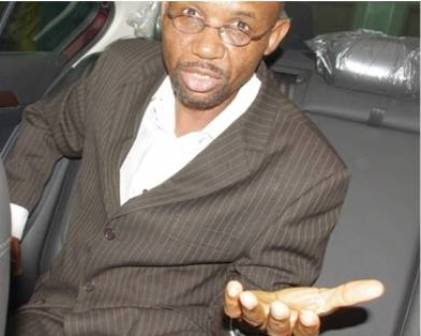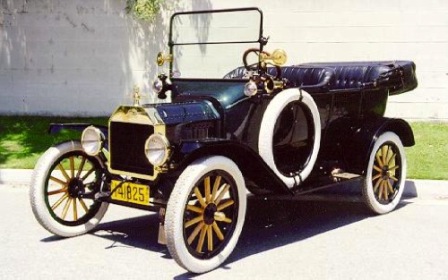FEMI OWOEYE
Nigeria’s re-launched automotive policy was barely two years old, when President Muhammadu Buhari assumed office in 2015. By then, auto assembly plants had been sprouting again across the country. And so to those, who understand auto industry as one of the leading employers of labour in the world, Nigeria’s industrial future looked brilliant.

But as at at Tuesday, when the nation marked Democracy Day as well as President Buhari’s three-year in office, the nation’s auto industry was yet to cross the “Red Sea”, talking less of even sighting the “Promised land. Automotive Industry Development Bill is still being held hostage somewhere, in the Senate. Also being kept in Central Bank of Nigeria’s Detention Camp has been a License for Auto Finance Bank, a document that should by now have facilitated Vehicle Fiance/Ownership Scheme phase of the nation’s auto policy.
Of course, after the 2015 election was lost and won, stakeholders expressed fear that Buhari administration might jettison the auto policy.
But came August 2016, hopes were rekindled at a forum hosted in Lagos by Ministry of Industry, Trade and Investment in partnership with the National Automotive Design and Development Council (NADDC) and the Nigerian Economic Summit Group (NESG). At the event, Nigeria’s Minister of Industry, Trade and Investment, Dr. Okechukwu Enelamah gave an assurance that Buhari’s administration had no plan to reverse the National Automotive Industry Development Plan (NAIDP) flagged off by its predecessor in July, 2014.
Rather, according to him, the government had identified “the auto industry as a strategic driver of industrialization”. In his presentation, the minister described the auto sector as a “key component of the Nigeria Industrial Revolution Plan (NIRP), aimed at diversifying the economy, and increasing the manufacturing sector’s contribution to GDP”, arguing therefore, that Nigeria could not afford not to nurture a successful policy for the sector which is a vital component of the economy.
Towards achieving high volume of production and making affordable the prices of locally made automobiles, in addition to impacting on the effort to raise the level of local content, the nation’s automotive industry stakeholders demanded, among others, a ban or stricter policy on tokunbo vehicles, restriction of vehicles importation to the official ports and launch of a vehicle finance/ownership scheme supported by government.
Based on the foregoing demands, Dr. Enelemah, on behalf of Buhari’s administration, pledged to ensure that Automotive Industry Development Bill was passed into law, implementation of the long-awaited vehicle-finance/ownership scheme, securing the land borders to curtail smuggling, enforcement of tariff as contained in the auto policy and linking the national automobile repository portal (NARP) with the Nigerian customs service portal.
The Score Card
As promised, President Buhari’s regime has actually made certain positive moves in line with its promises. But why have the moves not yielded desired results. Let’s look at each one-by-one:
SECURING THE LAND BORDERS TO CURTAIL SMUGGLING: Effective from January 2017, the federal government, amidst criticism and high powered propaganda machines, placed a ban on importation of vehicles through the land borders. Nigerian law makers led the opposing voices against the policy, hitting hard on federal government, especially after the Nigerian Custom Service (NCS) announced an open window for smugglers to pay up duties on vehicles smuggled into the country.
LINKING THE NATIONAL AUTOMOBILE REPOSITORY PORTAL (NARP) WITH THE NIGERIAN CUSTOMS SERVICE PORTAL: Launched during GoodLuck Ebele Jonathan’s regime, the system is meant to serve as a database for all vehicles in Nigeria as well as a collection of Vehicle Identification Number (VIN) for all locally assembled / imported vehicles. The VIN was intended to be a cross-reference portal for all vehicle licensing authorities before issuance of vehicle license and number plate. Indeed, President Buhari’s administration reiterated plans to continue this, sharing data with all government bodies having anything to do with vehicle registration and licensing. No doubt this scheme works anywhere it is used worldwide. It is, therefore, an effective complement to the ban on importation of vehicles via the land borders.
ENFORCEMENT OF TARIFF AS CONTAINED IN THE AUTO POLICY: On this, the federal government recorded only a partial fulfillment, maintaining the duties on imported new vehicles at over 70% in favour of local auto assemblers. Whereas duties on imported used vehicles has remained at 35%. That disparity has not fully yielded the desired results expected by local auto assemblers. Aside marketers of popular commercial vehicles like Toyota Hiace, strict competition from importers of used vehicles still make lives unbearable for most local assemblers.
Some would argue that ban of importation through the land borders are yielding results. Truth is, due to porosity of Nigerian borders, vehicles are still smuggled into the country on a daily basis. How the vehicles get registered is a mystery.
Worst of all, smugglers have gone into importation of accident vehicles into the country. To legally avoid duties on imported vehicles, some would cut cars into two, remove their engines, wheels and doors, containerize them and after clearing, move them straight to designated workshops, where they are welded and bolted together, painted and made to look as new. With this practice, culprits are still cutting off the largest chunk of what should have been market share of local auto manufacturers.
No wonder, according to the National Bureau of Statistics’ latest GDP data, motor vehicles and assembly output, which rose from N11.3bn (US$370.5) in the third quarter of 2013 to N14bn in the third quarter of 2014, dropped to N8.3bn in the third quarter of 2016. And by the end of 2017, the sub-sector recorded the worst decline in the manufacturing sector, shrinking by 33.3% in July to September.
IMPLEMENTATION OF THE LONG-AWAITED VEHICLE-FINANCE/OWNERSHIP SCHEME: This is the most important step Buhari’s administration is expected to have made since it came to power. It is vital to the increase in sales volume of the locally assembled vehicles. Had it been launched, millions of Nigerians with secured employment and regular income would have been motivated to buy brand new vehicles assembled in Nigeria, instead of celebrating imported used vehicles, most of which are death traps. Indeed, since President Buhari assumed power, moves were made to get auto Finance bank up and running. South African-based Wesbank was in Nigeria to key in to the programme. Application for licensing the bank was said to have been in custody of Central Bank of Nigeria (CBN) for over two years.
NAID BILL: Sending Nigerian Automotive Industry Development Bill to the National Assembly for passage, once again, is commendable. However, while it was passed sometimes last year, one learnt it is still being held hostage at the senate.
Conclusion
President Buhari’s administration, from inception, gave an impression that it intended to push the nation’s auto industry to the Promised Land. Yes, stakeholders suffered during the recession. Fillers from the industry indicate that things are today better in terms of availability of FOREX.
However, looking at the moves made so far, this regime seems to have put the cart before the horse in the process of pushing the auto policy. To build investment confidence, what should have been number one move was passage of NAIDB into law. It happened over six months ago. Till date, there has not been news of presidential assent, which means it is not yet in the nation’s status book.
Also of equal importance is Auto Finance bank scheme. Of what use is ban on importation of vehicles via the land border as well as other moves, when Nigerians can not afford to buy the vehicles assembled locally? Under this circumstance, how would most investors on ground move from SKD to CKD? On what ground would Original Equipment Manufacturers (OEM) set up factories in Nigeria, which is the ultimate objectives of the auto policy?
It’s either the present regime do not understand how the auto industry works or it simply suffers from misplacement of priority. Or could it be that there are saboteurs in this government, who are fighting tooth and nail to ensure Nigeria never have a virile auto industry, because of their selfish interest?
Or could it be that the NAC (now NADDC) Fund, meant to finance the scheme has been diverted, tampered with, and culprits are frustrating the take-off of the scheme so that questions would not end up having nice night inside EFCC’s modern detention? It’s just a thought. After all, if no termite has tampered with the fund, why can’t auto finance scheme simply kick-off, since it won’t require any additional fund from the government?
Another thought: Why is the bill being held hostage by whoever, wherever? Somebody close to government told me it was still in the senate. Why? And being an executive bill, why hasn’t presidency done a follow-up? Honestly, the more I look, the more suspicious I get.
yes, looking at overall performance in terms of diversification of the economy via agriculture and solid mineral; provision of infrastructure, especially power generation, which is now over 7,500 megawatts; putting Ajaokuta Steel Rolling Mill back on the table for completion, road/rail construction with plans to link all states of the federation by RAIL, anti-corruption war and boost to the nation’s foreign reserve, among others, President Buhari’s administration has performed above average.
 But looking at the so-called performance thread-by-thread, it is obvious that the regime has been uncoordinated, when it comes to pushing forward the automotive Industry Development, which, as confirmed by the Minister of Industry, trade and Investment himself, is key component of the Nigeria Industrial Revolution Plan (NIRP), aimed at diversifying the economy, and increasing the manufacturing sector’s contribution to GDP.
But looking at the so-called performance thread-by-thread, it is obvious that the regime has been uncoordinated, when it comes to pushing forward the automotive Industry Development, which, as confirmed by the Minister of Industry, trade and Investment himself, is key component of the Nigeria Industrial Revolution Plan (NIRP), aimed at diversifying the economy, and increasing the manufacturing sector’s contribution to GDP.
Notwithstanding the long list of achievements reeled out on the democracy day, as far as the nation’s auto industry is concerned, this regime has not done enough. And before the end of the year, lots can be done to rekindle the hope of indigenous and foreigners investors as well as stakeholders of the sector.

Without delay, the president needs to request for the NAID Bill passed since last year and sign it into law before an insider enemy locks it away. Mr. President also needs to immediately order the CBN to approve immediate take-off of the nation’s long-awaited auto finance Banks





